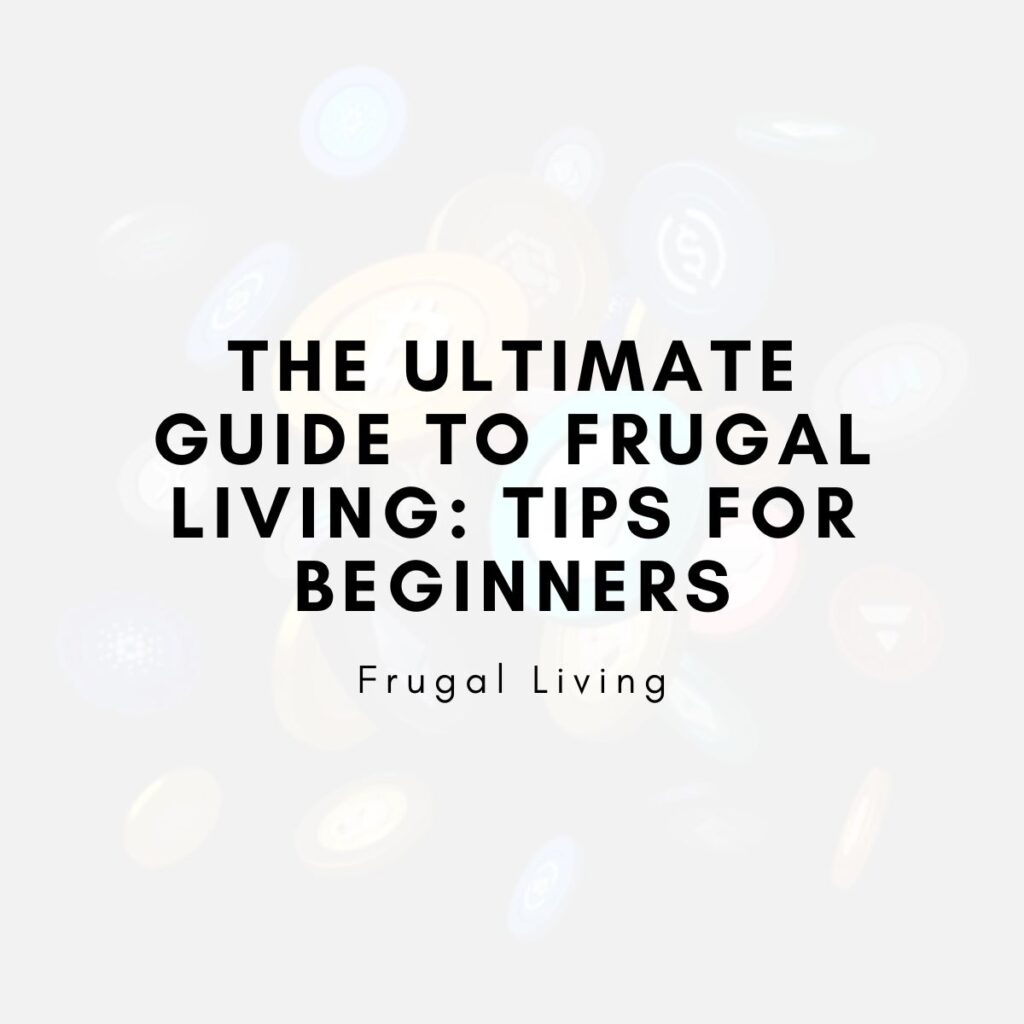
What is frugal living, and how can beginners start practicing it?
Frugal living is the practice of making intentional financial choices to minimize unnecessary expenses and maximize value. Beginners can start by creating a budget, embracing DIY projects, shopping smartly, meal planning, and exploring low-cost entertainment options. This guide provides actionable tips and examples to help you master the art of frugality while still enjoying life.
Summary Table: The Ultimate Guide to Frugal Living
| Section | Key Points | Examples |
|---|---|---|
| What is Frugal Living? | – Intentional financial choices to save money. | – Buy a reliable used car instead of a new one. |
| – Focuses on value over cost. | – Invest in a durable winter coat to avoid frequent replacements. | |
| Benefits of Frugal Living | – Achieve financial freedom. | – Save $400/month from reduced dining out expenses and invest it. |
| – Reduce stress from financial burdens. | – Use an emergency fund to pay for unexpected car repairs. | |
| – Aligns with sustainable practices. | – Use reusable containers and avoid single-use plastics. | |
| Budgeting for Frugality | – Understand income and expenses. | – Reduce coffee shop visits and save $1,800/year by brewing at home. |
| – Use tools like Mint or YNAB for tracking finances. | – Track spending patterns to identify savings opportunities. | |
| DIY Practices | – Saves money and fosters a sense of accomplishment. | – Repaint your living room yourself, saving $500 on labor costs. |
| – Examples include home repairs and homemade cleaning products. | – Make a vinegar-based cleaner instead of buying expensive store brands. | |
| Smart Shopping Habits | – Buy in bulk to reduce costs on non-perishables. | – Save $600 over six months by purchasing staples like rice in wholesale quantities. |
| – Use coupons and cashback apps like Rakuten and Honey. | – Earn $200 cashback during holiday shopping. | |
| – Shop secondhand for big savings. | – Purchase a gently used treadmill for $150 instead of $600 new. | |
| Meal Planning | – Prepping meals reduces food waste and dining out costs. | – Save 25% on groceries by cooking meals in advance for the week. |
| – Repurpose leftovers creatively. | – Turn leftover chicken into soups or sandwiches for additional meals. | |
| Affordable Entertainment | – Explore free or low-cost activities. | – Host movie nights at home instead of going to a theater. |
| – Participate in free community events. | – Attend free yoga classes in the park, saving $60/month. | |
| Building a Frugal Mindset | – Track financial progress to stay motivated. | – Use a spreadsheet to identify spending spikes and adjust habits. |
| – Celebrate milestones to reinforce positive habits. | – Enjoy a picnic to celebrate paying off debt instead of splurging. |
Introduction
Frugal living has gained traction in recent years, especially as people seek ways to combat rising costs and achieve financial independence. It’s not just about saving money but about finding value in every dollar spent. Whether your goal is to pay off debt, build an emergency fund, or simply reduce unnecessary expenses, adopting a frugal lifestyle can be life-changing.
But for beginners, knowing where to start can feel overwhelming. This ultimate guide is here to simplify the process with actionable advice and relatable examples. By the end of this article, you’ll be equipped with the knowledge and tools to begin your frugal living journey confidently.
Understanding Frugal Living
What Does Frugal Living Mean?
Frugal living is a conscious approach to spending. It’s about distinguishing between needs and wants, making intentional choices, and focusing on long-term financial well-being. For instance, instead of buying a new car every few years, a frugal individual might opt for a reliable used vehicle that meets their needs without a hefty price tag.
Frugality doesn’t mean you avoid spending altogether; rather, you spend where it matters. For example, someone practicing frugal living might invest in a high-quality winter coat that lasts a decade rather than buying a cheaper option that needs frequent replacement.
Myths About Frugal Living
There are many misconceptions about frugality:
- Myth 1: Frugal living is about being cheap.
- Example: Choosing the cheapest product often backfires when it breaks easily, costing more in the long run. Frugal individuals focus on quality and durability.
- Myth 2: Frugality is restrictive and joyless.
- Example: Instead of dining out at a pricey restaurant, a frugal person might host a potluck with friends, creating memorable experiences without overspending.
Benefits of Frugal Living
Financial Freedom
Frugal living lays the foundation for financial independence. By cutting unnecessary expenses, you can allocate funds toward savings, investments, or debt repayment.
Example: Imagine someone earning $3,000 per month. Instead of spending $500 on dining out, they reduce it to $100, redirecting the remaining $400 into a retirement fund. Over a year, this simple adjustment could contribute significantly to their financial future.
Reduced Stress
Living paycheck to paycheck is stressful. Frugality provides a buffer, allowing you to handle unexpected expenses without panic.
Example: Sarah, a teacher, used frugal living strategies to build a $5,000 emergency fund. When her car broke down unexpectedly, she was able to pay for repairs without incurring debt or anxiety.
Sustainable Living
Frugality often overlaps with eco-friendly practices, such as reducing waste and reusing items.
Example: A frugal family might adopt a “no single-use plastic” rule, investing in reusable containers and cloth bags. This not only saves money over time but also benefits the environment.
Essential Tips for Beginners
Start With a Budget
Why Budgeting Matters?
A budget is your roadmap to financial success. It helps you understand where your money goes and identify areas where you can cut back.
Example: John realized he was spending $150 a month on coffee shop visits. By switching to home-brewed coffee, he saved $1,800 annually.
Budgeting Tools to Consider
- Mint: Tracks expenses and categorizes them automatically.
- You Need A Budget (YNAB): Helps you allocate every dollar a purpose.
- Spreadsheet: A simple, customizable option for tracking income and expenses.
Embrace DIY Practices
Why DIY Saves Money?
Learning to do things yourself eliminates the cost of labor and often results in a sense of accomplishment.
Example: Emily, a frugal homeowner, saved $500 by repainting her living room herself instead of hiring a professional. She watched YouTube tutorials and borrowed supplies from friends, turning the project into a fun weekend activity.
Everyday DIY Ideas
- Repair small appliances instead of replacing them.
- Make your own cleaning products using vinegar, baking soda, and essential oils.
Frugal Shopping Habits
Buy in Bulk
Purchasing items in bulk can significantly reduce costs, especially for non-perishable goods.
Example: A family of four switched to buying rice, pasta, and canned goods from a wholesale store. Over six months, they saved $600 compared to purchasing smaller quantities at a regular grocery store.
Use Coupons and Cashback Apps
Coupons and apps are powerful tools for cutting expenses without compromising on quality.
Example: Lisa uses a combination of Rakuten and Honey while shopping online. During a holiday sale, she earned $200 in cashback, which she used to fund a family trip.
Shop Secondhand
Thrift stores and online marketplaces often have high-quality items at a fraction of the cost.
Example: Mark bought a gently used treadmill for $150 from Facebook Marketplace, avoiding the $600 price tag for a new one.
Meal Planning and Food Savings
Benefits of Meal Prepping
Saves Time and Money
Meal prepping reduces the temptation to order takeout, saving both money and time.
Example: Jenny spends Sundays preparing meals for the week. By cooking in bulk, she slashes her grocery bill by 25% and avoids the $15-per-meal expense of dining out during her lunch breaks.
Reduces Food Waste
Planning meals ensures that ingredients are used before they spoil.
Example: A frugal couple plans their dinners around what’s on sale at the supermarket, ensuring every item in their fridge is utilized.
Repurpose Leftovers
Transform leftovers into new meals to avoid waste.
Example: Leftover roasted chicken can be turned into chicken salad sandwiches or added to a soup for the next day’s lunch.
Frugality in Entertainment
Explore Low-Cost Activities
Entertainment doesn’t have to break the bank. Many enjoyable activities are either free or inexpensive.
Example: Instead of going to a movie theater, a family might have a movie night at home with popcorn and snacks for a fraction of the cost.
Attend Free Community Events
Many local communities offer free events, such as concerts, festivals, or fitness classes.
Example: David discovered a free yoga class in the park. Attending weekly sessions saved him $60 a month compared to a studio membership.
Building a Long-Term Frugal Mindset
Track Your Progress
Monitoring your financial journey keeps you motivated and highlights areas for improvement.
Example: Maria tracks her monthly spending using a spreadsheet. She noticed a spike in online shopping expenses and adjusted her habits, saving an extra $200 the following month.
Celebrate Milestones
Recognizing achievements, even small ones, helps reinforce positive habits.
Example: When a couple paid off their first $1,000 of credit card debt, they treated themselves to a picnic at their favorite park—an inexpensive way to celebrate their progress.
Stay Inspired
Surround yourself with like-minded individuals or resources to maintain your commitment to frugality.
Example: Joining an online frugal living group helped Tom discover new tips and stay motivated during his journey.
Conclusion
Frugal living is more than a money-saving strategy—it’s a lifestyle choice that can lead to financial freedom, reduced stress, and a deeper appreciation for life’s simple joys. By starting small, setting goals, and embracing a mindset of intentionality, you can reap the rewards of a frugal lifestyle while still enjoying what matters most.
Whether you’re a beginner or someone looking to refine their habits, the tips and examples shared in this guide can serve as a foundation for your journey. Remember, frugal living is a personal process—what works for one person might not work for another. The key is to find a balance that aligns with your values and goals.
Key Takeaways
- Frugal living prioritizes intentional spending and value over cost.
- Budgeting is the foundation of frugality—use tools like Mint or YNAB for tracking.
- Embrace DIY practices to save money on home repairs, cleaning products, and more.
- Smart shopping habits, such as buying in bulk and using coupons, can significantly reduce expenses.
- Meal planning and repurposing leftovers minimize food waste and cut grocery bills.
- Low-cost entertainment options, like free community events, can enrich your life without overspending.
- Tracking progress and celebrating milestones keeps you motivated to stick to frugal habits.
- Frugal living is about achieving financial goals without sacrificing happiness or quality of life.




